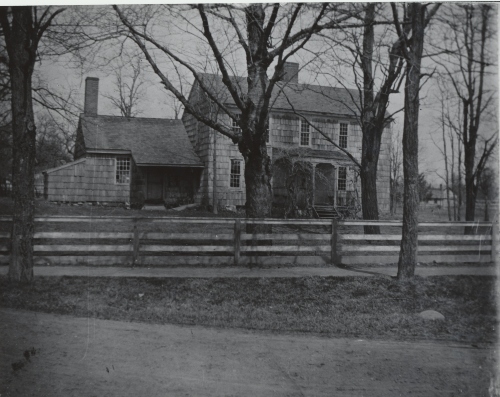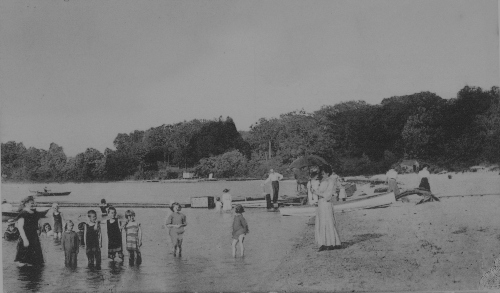Check out these great old pictures in and around Smithtown from back in the day. Recognize any of these areas? All photos from the Collection of the Smithtown Historical Society. There’s more where these came from. Go to the historical society’s website to find out more about Smithtown’s history.

From The Collection of the Smithtown Historical Society.
The A.E. Hallock Blacksmith Shop occupied the northeast corner of Landing Avenue and Main Street until the huge three-story building burned to the ground in 1908. The only building to survive was the Hallock House, which in the years following WWII was moved up Landing Avenue and placed near the railroad tracks. Lynn Nichol’s Shell gas station stood on the former blacksmith shop site until it was replaced by a multiple tenant building “Kings Landing” (now housing an H&R Block, Richard Salon, Dance N’ Things, and Smithtown Chamber of Commerce).

From The Collection of the Smithtown Historical Society.
The Widow Blydenburg’s Tavern which graced the northeast corner of Middle Country Road and North Country Road until it was razed in the early 1900s. In 1923, the newly created Village Green Corporation acquired the property in hopes of maintaining it as a public park. The town’s gradual loss of interest in the site prompted the organization to donate the land to the Smithtown Library in 1947.

From The Collection of the Smithtown Historical Society.
Lake Ronkonkoma is one mile in diameter and covers portions of three townships – Smithtown, Brookhaven, and Islip. Historically, the lake beckoned to New York City tourists, especially during the early automotive years of the 1920s and 1930s. In the Nesconset-Smithtown portion of the lake, waterside entertainment flourished and visitors often stayed in surrounding rented rooms, cottages, and tents. Unfortunately, due to the pollution from storm water runoff contaminants the lake is no longer safe for swimming.

From The Collection of the Smithtown Historical Society.
The main part of the structure of the Caleb Smith II house was built in 1819. Set to be demolished to make way for a new development in 1955, the home’s incredible 13-mile move from Commack to its present site in Smithtown was funded by the original owner’s great-granddaughter Anna Blydenburg. Crews from the power and telephone utility companies cleared the lines as three trucks and tractors moved the structure and its roof separately. While the main house was saved, all of the outbuildings- including this barn – were leveled. The most unique structure on the property that was lost was a simple one-and-a-half-story cottage that had been quarters for slaves and later servants of the Smith family. Photographed in 1915, this barn was sitting in the middle of surrounding potato field that stretched as far as the eye could see. Today, a bowling alley accompanies the space (Was Bowl AMF now is Bowlero).
The Caleb Smith II House located at 5 North Country Road, Smithtown is open to the public Saturdays from 10:00 to 2:00 and hosts rotating/permanent exhibitions year round.

From The Collection of the Smithtown Historical Society.
Through now obscured by a tangle of wires and traffic lights, the twin peaks or the former A&P grocery store and Freelan Jones Stationary Shop are still visible rising above Main Street. Initially, constructed as two separate establishments (as seen in the image), the buildings have since been combined into a single structure. Following a renovation in the early 2000s, the structure reopened as a recording studio, insurance office, and physical therapy center (currently only the insurance office still resides in this building).















